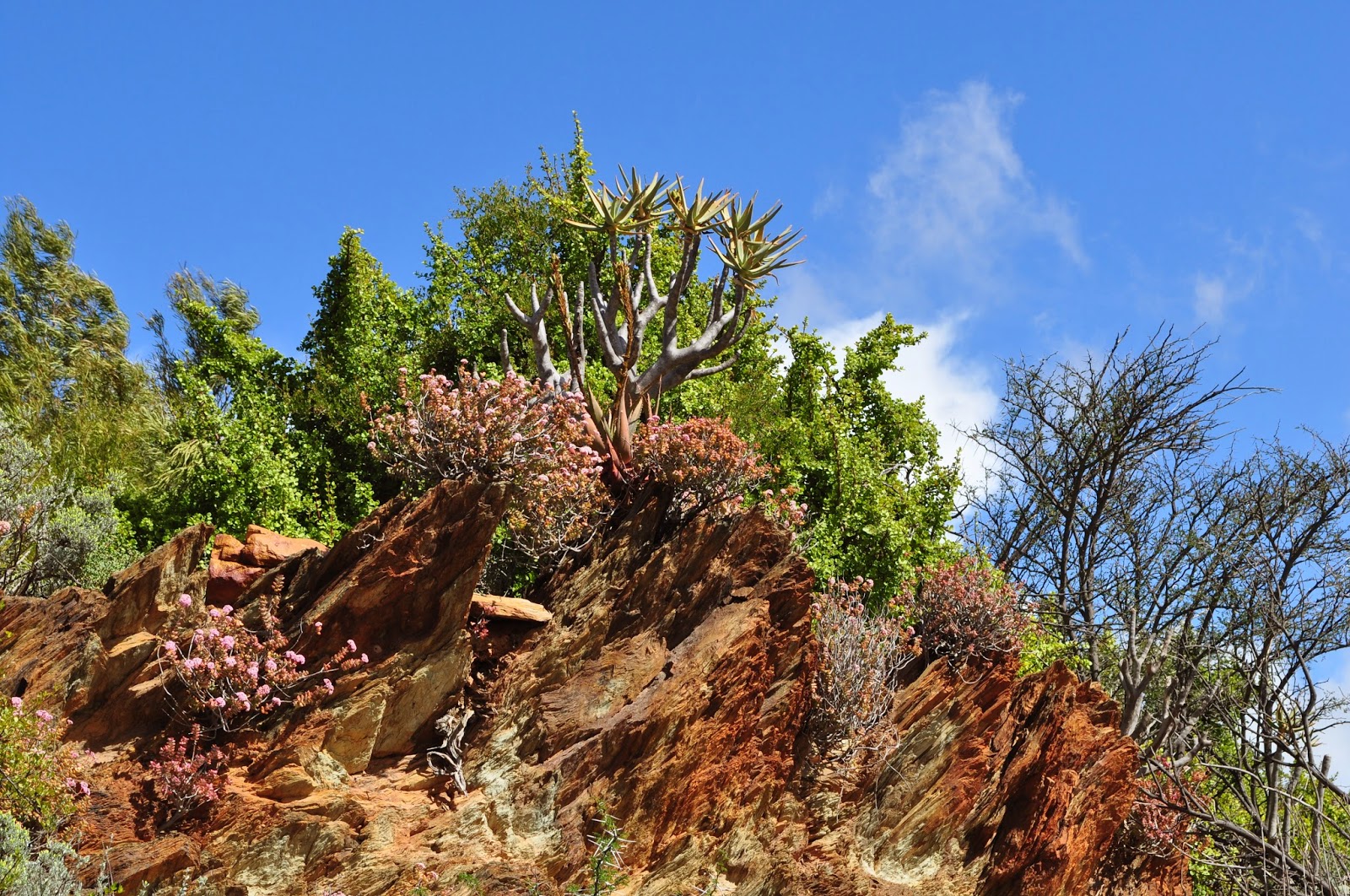The Karoo Desert National Botanical Garden is just 1: 30
minutes’ drive from Cape Town. It is definitely a Botanical garden different
from others. They specialise in succulents and bulbs growing around the
country. Most of the bulbs and succulents flower in spring from July till late
September. There is also a wide variety of other desert and semi- desert plants
that flower throughout the year.
 |
| A display of Aloe dichotoma |
The garden consists of 154 hectares of which 11 ha are cultivated
and displayed with a huge diversity of plant species. There are 270 indigenous
species recorded among them 83 are geophytes and 74 are succulents.
After walking around the garden’s show beds, there are two
hiking trails for visitors who are keen on seeing the natural vegetation.
 |
| This trail is called the Grysbokkie trail it is the longest trail in the garden, and takes approximately 2 - 3 hours to complete. |
History of the garden:
The garden was established in 1921 near Matjiesfontein, but because there was a lack of water they decided to move the garden to Worcester. When the garden opened again in 1945 it was known as Karoo National Botanical garden. In 2001 the word “desert” was added to the name to put emphasis on the fact that plants cultivated and displayed are from desert and semi desert regions of the country.
 |
| Along some paths are rocks filled with plants like Crassula rupestris subsp. rupestris. |

































